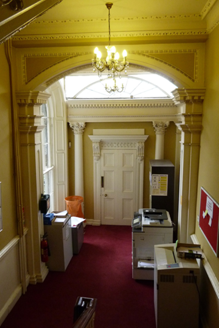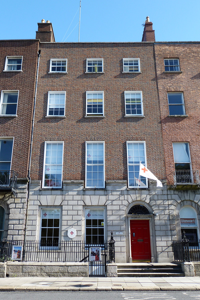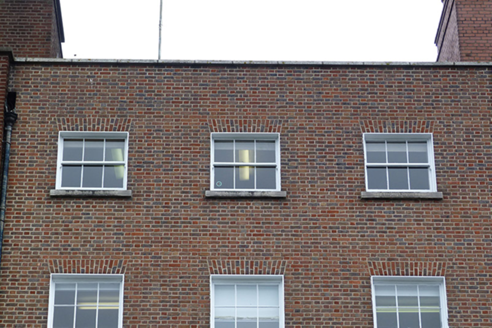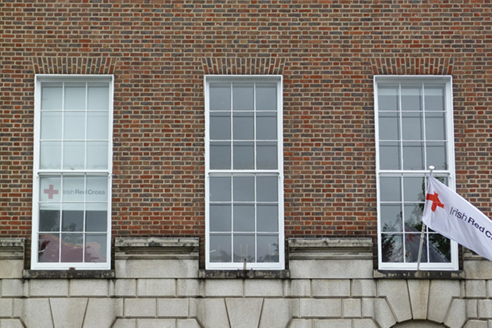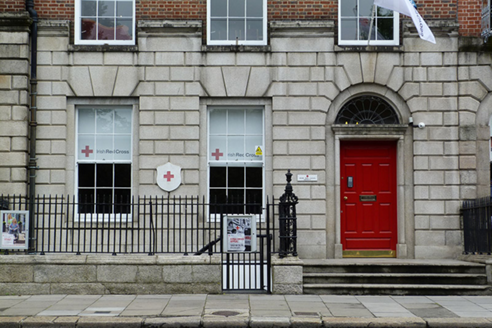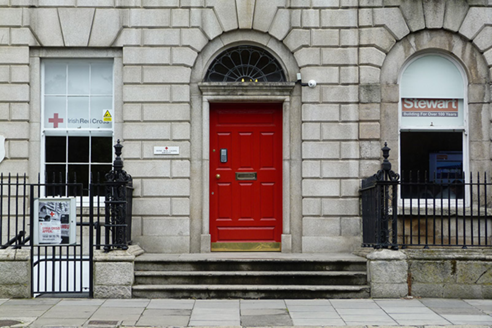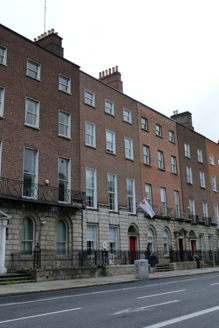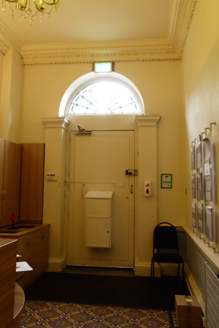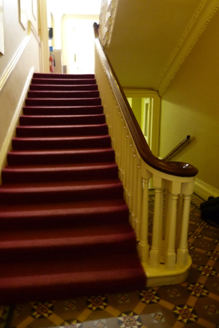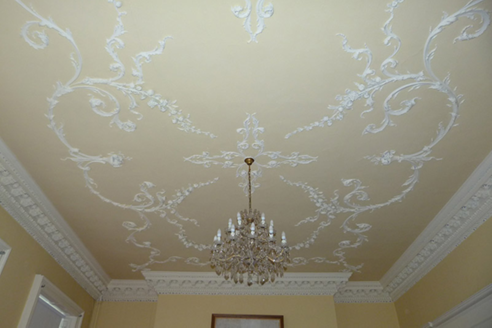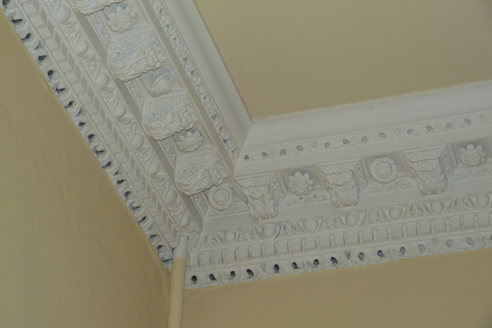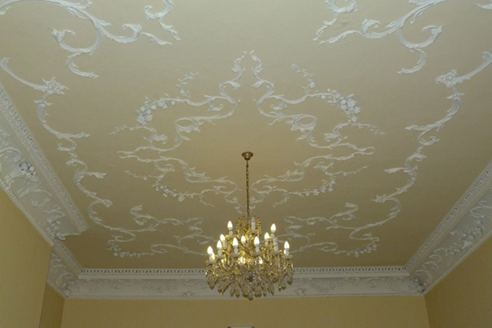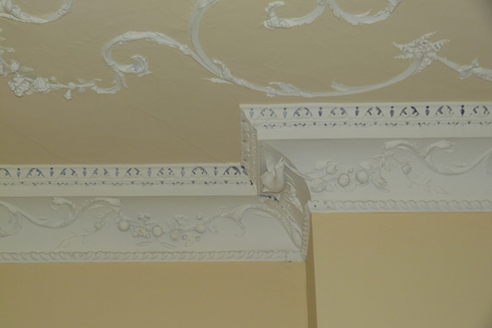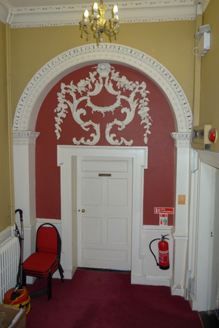Survey Data
Reg No
50100363
Rating
Regional
Categories of Special Interest
Architectural, Artistic
Original Use
House
In Use As
Office
Date
1760 - 1780
Coordinates
316709, 233659
Date Recorded
10/08/2016
Date Updated
--/--/--
Description
Attached three-bay four-storey former house over basement, built c. 1770, rear having one-storey over basement return with further small addition to house end, and fire escape stairs. Now in use as offices. Slate roof, pitched to front part, behind brick parapet with granite coping, and rear having hipped lean-to roof to east and hipped roof to west. Shouldered brick chimneystacks to party walls with clay pots, and with cast-iron rainwater goods to west. Flemish bond red brick walls over granite stringcourse, with rusticated granite walls to ground floor and rendered walls to basement. Square-headed window openings, diminishing in height to upper floors, with raised rendered reveals, painted granite sills and timber sliding sash windows, six-over-six pane to basement, ground and second floors, nine-over-nine pane to first floor and three-over-three to top floor. Round-headed entrance doorway with granite surround, frieze and cornice, peacock's tail fanlight and eight-panel timber door with brass furniture. Granite platform with three granite bull-nosed steps. Wrought-iron railings enclosing basement area with decorative wrought and cast-iron corner posts on moulded granite plinth. Cast-iron coal-hole covers set in granite flags to footpath. Entrance hall and stair halls have tiled floors, moulded dado rails and egg-and-dart plasterwork cornices; entrance hall has plaster ceiling rose, square-headed door openings with lugged and kneed architraves and timber panelled doors; stairs hall has timber open-string staircase with turned balusters and mahogany handrail; first floor landing has round-headed recess to square-headed doorway, flanked by pilasters with ornate capitals and archivolt with inset lugged and kneed timber surround with timber six-panel door having Rococo plasterwork to tympanum; ground floor rooms have deep timber skirtings, chair rails, chimneybreasts to west wall, and timber lugged-and-kneed architraves to panelled doors, windows have lugged and kneed surrounds, panelled shutters and egg-and-dart cornice; first floor rooms have deep timber skirtings, chair rails, chimneybreasts (marble to west wall), square-headed doorways with reeded or lugged and kneed architraves and panelled doors, Rococo plasterwork ceilings, dentillated cornice to front room, coved cornice to rear. Return has engaged Corinthian columns supporting dentillated cornice with lunette window above and inset with square-headed doorway having panelled pilasters with decorative capitals, guilloche decoration to frieze, moulded cornice and six-panel door; round-headed window to west side with panelled reveals; whole approached by segmental archway with clustered pilasters having dentillated capitals and decorative spandrels.
Appraisal
Built by Joseph Keane, Clerk of the Ordnance. The interior retains Rococo decorative schemes to the first floor rooms and to the doorcase to the first floor landing. A variety of early internal joinery also survives, including lugged-and-kneed and reeded architraves and window surrounds. the building thus makes a strong contribution to the early character of the square, which has been well retained along this northern stretch. The rear boundary is largely intact. It was built as part of the original development of the square. Laid out as part of the Fitzwilliam Estate, it is one of the best-preserved Georgian streetscapes in Ireland. The north, east and south sides of the square are lined with terraced houses of eighteenth and nineteenth-century date, while the west side is terminated by the garden front of Leinster House. The houses maintain a relatively uniform building height and design, attributed to standards promoted in Fitzwilliam's leases. Individuality was introduced through the design of doorcases, ironwork and interior decorative schemes.
